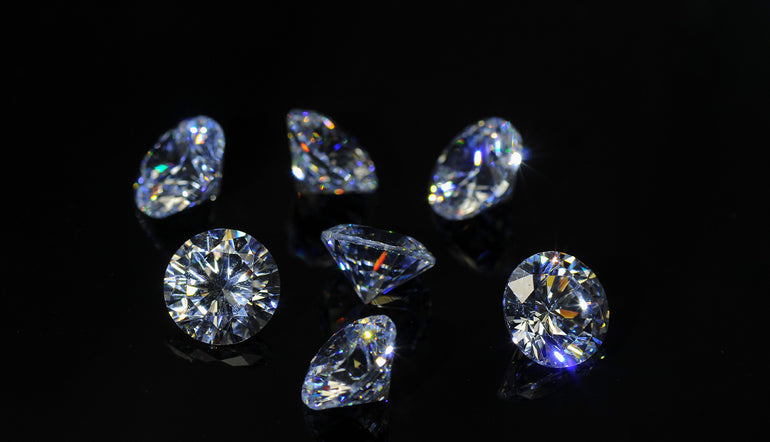Lab-grown diamonds are a relatively new invention that is still in its introductory phase in the competitive diamond industry. After over a century of research, experiments and endless scientists putting their heads together to get the ball rolling on their magical idea, they finally managed to develop gem-quality lab grown diamond jewellery. Though it was not an easy feat!

Lab grown diamonds as we know them are practically identical to mined diamonds, in fact, the smallest difference cannot be spotted by the human eye, or even a microscope for that matter! But they didn’t start off this way, the race to create a flawless diamond wasn’t always smooth sailing.
Read more to find out about when the first synthetic diamond was created.
Overview:
- The synthetic diamond is created: 1954
- The first gem-worthy diamond is created: 1971
- Lab-grown diamonds: today
The synthetic diamond is created: 1954
In 1797 scientists discovered that diamonds are made up of pure carbon. This discovery started the race to create the first synthetic diamond. Throughout the 19th century many scientists tried to recreate optimal conditions for diamond formation, however, none were successful enough to be replicated.
The first proven synthetic diamonds were made by GE in 1954, under a project codenamed “Project Superpressure”. The project originated in the 1940’s, but was postponed during world war II. Scientists tried many different methods over many years, testing various temperatures and pressures against crystal seeds.
Finally, by using a high-pressure belt press, small seed crystals were heated to temperatures of 1,600º and a pressure of 100,000 atm and finally, small stones grew. In this same device, they dissolved graphite in metals such as iron and nickel to accelerate the transformation of graphite to diamond. Scientists believed they had succeeded when the stone they created broke the scientists' cutting tools. Famously, diamonds have a Moh’s hardness of 10, which means that they can scratch and destroy metal. Although the victory was short-lived as these created diamonds were far too small for gem use.

The first gem-worthy diamond is created: 1971
While an amazing milestone, it would be another 7 years before a high-quality gem crystal was created in 1971 using a tube to add heat and pressure to a seed until it grew into a diamond.
Scientists quickly realised that in order to compete economically with mined diamonds, their stones needed improvements. In the beginning, lab-grown diamonds were often yellow and contained many inclusions, decreasing their value.
Upon further research, it was discovered that nitrogen was the culprit for the yellowing colour, and subtle adjustments in the growing process improved the production of colourless diamonds. After a few decades, scientists from across the globe made it possible to create diamonds that exceeded mined diamonds in carat (size), colour, and clarity.

Lab-grown diamonds: today
Since then, their welcome into the diamond industry has been steady, and they currently represent just a small percentage of today’s market. However, each year the demand for lab-grown diamonds increases, partly due to their affordability, as well as a growing consumer interest in environmentally friendly products.
Lab-grown diamonds have transformed the diamond jewellery industry. Not only are they cost-effective, but they are environmentally friendly. The lab grown diamonds are chemically, physically and optically the same as one that is produced in the earth’s core, giving the wearer the iconic sparkle of a diamond, guilt-free.

While mined diamonds are considered traditional and classic, they cause a huge toll on the environment, and in a society that is becoming more and more ethically conscious, lab-grown diamonds are really starting to gain traction.
If you are in the market for a lab grown diamond engagement ring, diamond tennis bracelet or a staple pair of lab grown diamond earrings - don’t look any further than a gorgeous lab-grown diamond from Luminesce. With years of development and research under their belt, scientists have worked meticulously to create ethically sourced diamonds that don’t compromise on sparkle.




